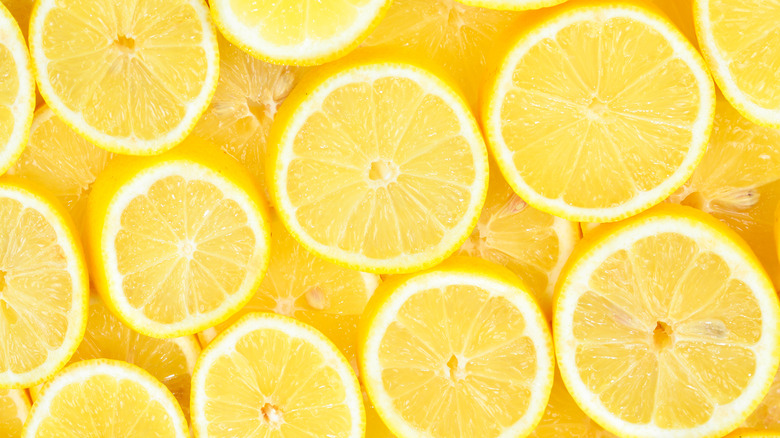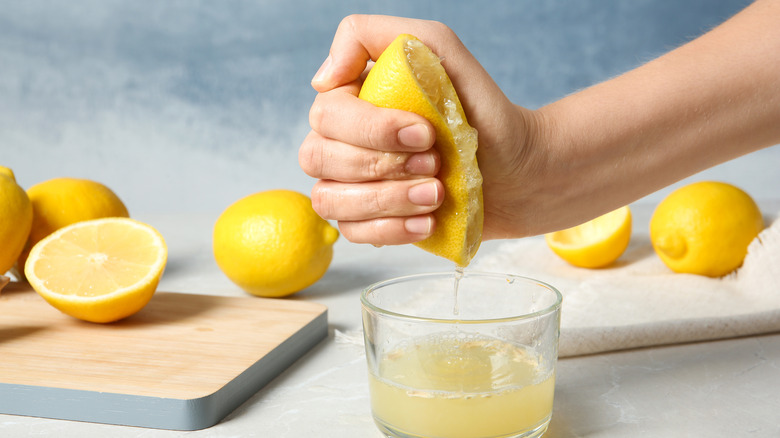The Reason You Should Roll Lemons Before You Juice Them
Freshly squeezed lemon juice adds a pop of flavor to a variety of savory dishes. Whether they're brightening up a salad as the main component in a vinaigrette or pairing with rich butter and fragrant parsley in a warm pasta dish, the citrus notes of fresh lemon help add to a recipe's balanced flavor profile. They can even be the star ingredient in a range of sweet lemon recipes, from cake to curd.
When it comes to juicing lemons, there are several key tips to extracting the most liquid from the fruit: First, go with large, easy-to-squeeze, brightly colored lemons, which are known to produce the most juice, according to US Citrus. Second, make sure you avoid a common mistake when juicing lemons, which is forgetting to zest them before slicing them. Finally, even if that last-minute grocery run yields only the so-so, picked-over pile of lemons, leaving you with a less-than-perfect fruit, don't worry: There are still a few easy ways to get plenty of juice.
Rolling lemons helps release their juices
You might have heard that it is best to roll lemons on a hard surface before using them. This is because rolling a lemon helps to bring its juices to the surface of the fruit. Country Living reports that the simple motion helps free up juices from the lemon's different segments, which in turn means that you'll get plenty more flavorful juice out of a single squeeze. The trick can be especially handy if you need lemon juice but only have lemons that aren't fully ripe. However, it's not a bad idea to roll any lemon on the counter prior to squeezing to ensure you're reaping the fruit's maximum benefits.
There are a few other hacks to getting the most juice out of a lemon. US Citrus reports that juicing lemons is much easier if they're frozen first. This is because the juices within the lemon expand when frozen, and the cell walls break down to leave you with a softer fruit. Just make sure to let it defrost completely before juicing it. You can also half it lengthwise, rather than widthwise, which exposes more of the lemon's interior and allows more juice to come out. And as for the scraps, here's what to do with leftover lemon peels.

